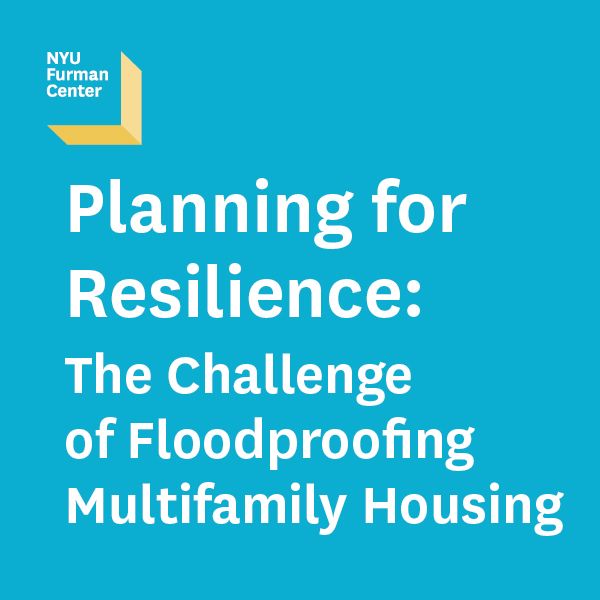
Report: Multifamily Housing in NYC and Other Urban Areas Remain Vulnerable to Flooding

Three years after Superstorm Sandy devastated parts of New York City, the housing stock in many urban coastal areas remain vulnerable to flooding, according to a report by the NYU Furman Center. The report illustrates the significant design and financial hurdles of retrofitting multifamily housing common to many urban, coastal areas.
 The report, Planning for Resilience: The Challenge of Floodproofing Multifamily Housing (PDF), released today, describes the prevalence of multifamily housing in many flood-prone coastal areas.In addition, it notes that FEMA regulations and flood insurance rates will be a driving factor shaping what retrofits building owners undertake, but outlines concrete actions state and local policymakers can take to help promote longer-term resilience planning by multifamily building owners.
The report, Planning for Resilience: The Challenge of Floodproofing Multifamily Housing (PDF), released today, describes the prevalence of multifamily housing in many flood-prone coastal areas.In addition, it notes that FEMA regulations and flood insurance rates will be a driving factor shaping what retrofits building owners undertake, but outlines concrete actions state and local policymakers can take to help promote longer-term resilience planning by multifamily building owners.
Key findings from the report include:
1. Many major U.S. urban areas have a significant share of housing units in multifamily buildings located in their floodplains.
- New York City: The vast majority of housing units in New York City’s floodplains (over 70%) are is in multifamily buildings. The vast majority of these (over 90%) were built prior to the adoption of floodplain maps in 1983.
- Share of multifamily housing stock in 100- and 500-year floodplains: The share of multifamily units as a share of total units in the 100/500-year floodplains varies significantly across the other metro areas included in this study: Miami (37%), Baltimore/Washington D.C. (33%), Boston (23%), Tampa (23%), Houston (16%), Philadelphia (16%), Providence (14%), and Virginia Beach (13%).
- After New York City, Miami is most at-risk: Of the jurisdictions we analyzed, Miami has both the second largest number of multifamily units in the floodplains (over 400,000), and the second largest share of units in the floodplain that are in multifamily buildings (37%).
2. FEMA’s all-or-nothing compliance rules present significant design and financial challenges to implement, leaving multifamily building owners vulnerable to expensive flood insurance premium hikes.
- Base Flood Elevation (BFE) standardElevate everything: In order for a residential building to comply with FEMA regulations, all building systems and living space must be moved above the Base Flood Elevation (BFE). Multifamily buildings may often have residential units, common areas, or mechanical systems located on floors below the BFE. Reconfiguring these buildings can be expensive and complex, and threaten the income of a building.
- Financial challenges of retrofitting: Flood retrofits can be expensive and hard to finance, particularly in multifamily buildings serving low- and moderate-income households. Government-subsidized buildings (such as NYCHA properties) may face additional hurdles because of the rigid regulatory structures requirements that govern them
3. While FEMA regulations and flood insurance rates will be a driving factor shaping what retrofits building owners undertake, state and local governments can take important steps to help multifamily buidlings adapt for resilience.
- Align local regulations with resilience goals: Local governments can make sure that local zoning and building codes provide owners flexibility to implement smart resilience strategies. This might include forward-looking regulations that require buildings to elevate higher than what is currently required by FEMA to take into account the risk of future sea level rise.
- Help owners understand and plan to mitigate flood risk: Local policymakers should encourage long-term planning as well as make available the technical resources and information needed to plan.
- Help property owners fund retrofits: Local governments should, at a minimum, encourage owners to include resilience upgrades in their long-term capital plans for their buildings, while also looking for ways to help fund resilient retrofits directly through community investment groups or philanthropic organizations.
For more on multifamily resilience, see The Price of Resilience report.


